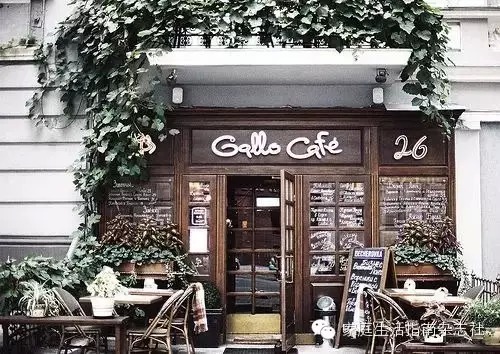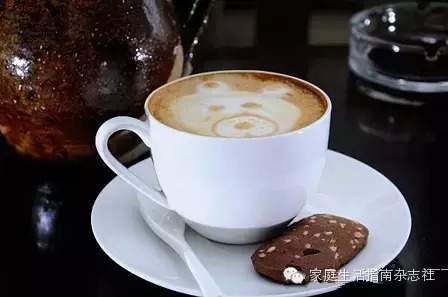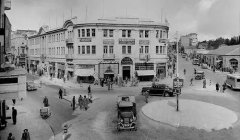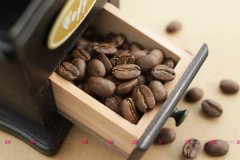To understand Western culture, you must first understand its coffee.
Coffee, as a western-style drink, is now all over the streets. But if you really walk into a cafe and face the dazzling variety of coffee on the menu, many people will inevitably be dumbfounded. Reading this issue may be a good place to start, learn some simple principles of coffee making, understand the differences between cappuccino and Italian espresso, American coffee, and next time you can say what you want in this situation.
[teach you how to know coffee]
The top favorite types of coffee include espresso, cappuccino, Americano, cafe latte and cafe mocha.
The most popular coffees are as follows: espresso / espresso, cappuccino, American, latte and mocha.
Espresso is loved by many coffee connoisseurs (expert) and is known as "the essence of the coffee drinking world". Espresso is made by forcing very hot water under high pressure through finely ground (finely ground) coffee. Crema, a heavy red-brown foam layer, defines well-crafted espresso. It taste strong and bitter for those who are new to the coffee world. But a sip of it will leave a faint fragrance lingering on the palate (taste). (See photo)
"Italian extra strong", known as the "soul of coffee", is the favorite of many senior coffee lovers. It is extracted from fine coffee powder by high temperature hot water under high pressure. How does it make a good Italian extra strong? To see if there is a thick layer of reddish brown foam floating on the surface-"Klima". Because the taste is extremely rich, people who start to drink coffee will find it very bitter, but it definitely leaves fragrance on the lips and teeth.
Americano is an espresso shot that is diluted to taste with hot water. It's said the name was given to insult Americans whom the Europeans believed were not up to drinking straight espressos. Americano is recommended to new coffee enthusiasts who may find the espresso taste is too strong. In China, many coffee shops add cream and sugar to Americano to suit the taste of regular customers.
American coffee is an Italian style diluted by hot water. In the eyes of Europeans, Americans can not appreciate mellow coffee, so this kind of weak coffee is called American coffee. For those who are new to drinking coffee, they may think that espresso is too strong, so American coffee is worth recommending. American coffee in many cafes in China has added cream and sugar to cater to the tastes of ordinary consumers.

Cappuccino and latte are the favorites among girls, both consisting of espresso, steamed milk, and frothed milk. All this makes the coffee taste more diluted and weaker. Cappuccino has a thicker layer of frothed milk than latte. When enjoying a quality cup of Cappuccino, with rich aroma and a foam mustache, you are actually enjoying a moment of innocence and romance. (See photo)
Cappuccino and latte are girls' favorite coffees with exactly the same ingredients: espresso, hot steamed milk and foam. In this way, the taste of the coffee itself is even lighter. Cappuccino foam is richer than latte, taste a good cappuccino, full of fragrance, foam on the lips, enjoy the moment of innocence and romance.

Cafe mocha is a popular after-dinner coffee in the West. It is one part espresso with 1 part chocolate syrup and 2 or 3 parts of frothed milk. Whipped cream (fresh cream) on top is an option. For a friend who rarely drinks coffee but likes chocolate, mocha is the best choice.
In the West, people like a cup of mocha coffee after dinner, which consists of an espresso, a chocolate syrup and 2-3 portions of cream, and can be topped with some whipped cream. For those who don't drink coffee much but love chocolate, mocha is the best choice.
[tale of Coffee]
Barista [coffee maker]
A barista is a bartender who is expert in the art of making espresso and espresso-based beverages.
Baristas are service staff who are good at making coffee and all kinds of coffee drinks.
Shot [one ounce of espresso]
An additional espresso shot will cost another 10 to 15 cents.
An extra espresso costs another 10 to 15 cents.
Body [alcohol]
The taste of coffee on the tongue after drinking it.
A coffee's body may be light or thin, medium, full, or very full (buttery or syrupy).
Coffee can be light, thin, medium, high, or even fat (as thick as butter or syrup).
No foam [no foam]
If you don't like the foam on your latte sticking to your nose, you can tell the service staff no foam.
I want some extra foam.
I'd like some more foam.
Dry [more foam, less milk]
If you like cappuccino full of sweet milk foam, you can say:
I want a dry cappuccino.
I'll have a cappuccino with plenty of milk.
Whip [whipped cream]
The abbreviation for Whipped cream. If you want to reduce the calories of coffee, you can say:
I don't want any whipped cream.
I don't want whipped cream.
Espresso Macchiato [concentrated macchiato]
The espresso is gently marked with foam.
Caramel Macchiato [caramel macchiato]
Starbucks' original drink, steamed milk + espresso + vanilla syrup, topped with caramel.
Espresso Con Pana [concentrated Campbell blue]
The espresso is covered with smooth whipped cream.
Caffe Misto [Mistol Coffee]
Coffee milk made up of half coffee and half milk.
Coffee é Au Lait [Ole Coffee]
French favorite breakfast coffee, similar to Mistol, but with more milk.
Kopi Luwak [civet coffee]
Also known as Kopi Luwak, one of the most expensive coffee.

[have a cup of coffee]
Choose your drink and size. In Starbucks, a short is the equivalent of 8oz, a tall 12oz, and a grande is 16oz.
First, choose the coffee you want and the cup size. At Starbucks, there are 8 ounces (240 milliliters) small cups, 12 ounces medium cups (360 milliliters) and 16 ounces large cups (480 milliliters). (note: 1 ounce = 30 ml)
Ask the barista for decaffeinated coffee (decaffeinated coffee) if that is what you want. If you like, order a flavoring. Chocolate, vanilla, caramel and hazelnut are the most popular.
If you need decaf, you can explain it to the barista. You can also add a little flavor syrup, chocolate, vanilla, caramel and hazelnut to the coffee if you like.
Learn oral English:
I don't know what to do with it. I think 39 like a short low-fat mocha for here.
I'd like a small cup of low-fat mocha coffee for the store.
I want a tall latte with hazelnut syrup to go.
I'd like a take-out medium double hazelnut latte.
Can you get me a tall iced decaf mocha without whipped cream to go?
Please bring me a medium decaf iced mocha without whipped cream.
Important Notice :
前街咖啡 FrontStreet Coffee has moved to new addredd:
FrontStreet Coffee Address: 315,Donghua East Road,GuangZhou
Tel:020 38364473
- Prev

Show you the famous cafes in Europe.
If the origin of coffee can be traced back to ancient African and Arab cultures, then the cafe people remember today is a pure European culture, or more accurately, it is even a cradle and historical witness of modern European civilization. Coffee shop culture is the witness of modern European history and civilization, so I am not at home, in the coffee shop, not in the coffee shop.
- Next

The origin of coffee the origin of this plant can be traced back millions of years.
The origin of coffee plant can be traced back to millions of years ago, in fact, the real age when it was discovered can no longer be tested. It is only said that coffee was a shepherd named Kaldi in the Ethiopian Highlands. When he discovered that his sheep had inadvertently eaten the fruit of a plant, he became very lively and lively, and discovered coffee ever since. All historians seem to be the same.
Related
- How did the Salvadoran coffee industry develop in Central America?
- What exactly does the golden cup extraction of coffee mean?
- The Origin of Coffee flower
- [2023 Starbucks World Earth Day] there are more meaningful things besides free Starbucks coffee!
- What kind of coffee is there in Spain? 9 Flavors of Spanish Coffee
- Aromatic African coffee| Kenya's coffee culture and historical production area
- Liberica Coffee Bean knowledge: the characteristics of Liberian Coffee beans of the three original species of Coffee beans
- The origin and formula of Spanish latte introduces the taste characteristics of Bombon coffee in Valencia, Spain.
- How to adjust the solution of over-extracted coffee
- What is the tasting period of coffee beans? What is the period of coffee and beans? How should coffee wake up and raise beans?

